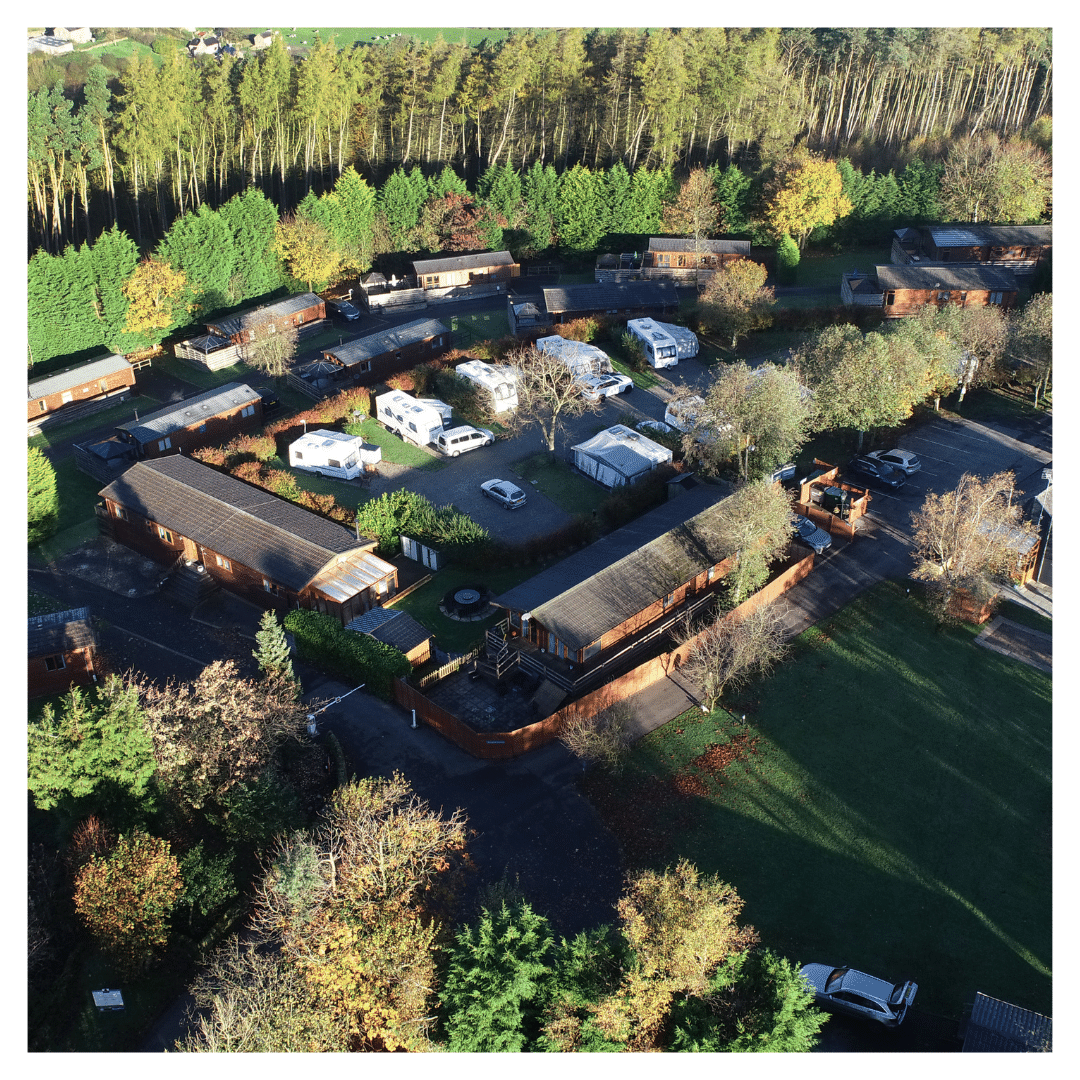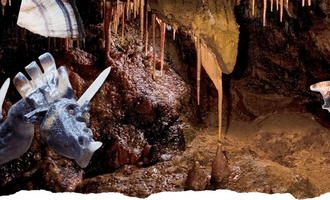Interesting Facts about the Peak District
Longnor Wood is a 5-star adult only holiday park located in the heart of the Peak District National Park. The Peak District National Park is 555 square miles in size, and covers the five counties of Derbyshire, Yorkshire, Staffordshire, Greater Manchester and Cheshire. In this article we pick up on some of the lesser known but more interesting facts about England’s first ever National Park.

The Peak District – site of England’s first ever mass trespass
The history of the Peak District National Park is closely tied to the history of all Britain's national parks, being England’s first ever national park. The desire to roam started as early as 1880 when the MP James Bryce MP started a campaign for public access to the countryside. Demand grew in the 1900’s with a growing appreciation of the outdoors and the benefits of physical exercise and more people seeking an escape from towns and cities.
1932 saw a mass trespass on Kinder Scout in the Peak District. Walkers exercised what they saw as their right to walk unhindered on open moorland. They faced opposition from local landowners and five trespassers were imprisoned. This led to the principle of a national park being established in 1940 and an Act of Parliament in 1949 to establish National Parks to preserve and enhance their natural beauty and provide recreational opportunities for the public.
Sir Arthur Hobhouse described the essential requirements for a National Park as:
- great natural beauty
- a high value for open-air recreation and substantial continuous extent
- quickly accessible from each of the main centres of population in England and Wales
- merit in variety and with the wide diversity of landscape
In 1951 the Peak District became the first ever National Park.

The Peak District Millstone
The Longnor Wood logo features the famous Peak District millstone with a hole in it that looks like a doughnut and acts as a boundary marker on the roadside marking the entrance to the National Park.
Millstones manufactured in the Peak District for grinding grain were used in pairs, with the base stone (or “bed stone”) remaining stationary and the top stone (or “runner stone”) spinning above, creating a grinding action between the two to turn the grains into flour. The hole in the middle is known as the ‘eye’ and it was how the raw grain entered the millstones to be ground into flour.
Not all Peak District millstones were used in mills for grinding flour; they were used as grindstones for sharpening steel probably due to the Peak District’s close proximity to Sheffield. Grindstones were generally of a finer texture than millstones and were used for producing needles and pins for the textile industries. The grindstones would have been used to sharpen the metal to the points needed.
The Derbyshire Peak District produced more than all other millstone-making areas in Britain put together. ‘Millstone grit’, a variety of coarse sandstones, is an integral part of the geology of the Dark Peak in the northern parts of the Peak District. Many of the edges, including Stanage Edge, Millstone Edge and Burbage Edge, are all made up of this coarse gritstone.
At the start of the 18th Century white bread became more popular, which required finer, whiter flour and left the millstones made of Peak District gritstone unsuitable as they often left tiny fragments of stone powder which discoloured the flour. Secondly machines became more commonplace in the mills allowing high speed grinding. This subjected the millstones to more wear which meant they wore down more quickly and required re-cutting regularly. This meant that chert composite stones (or “French stones”) were developed as an alternative to the Peak District gritstone as they lasted longer and required much less maintenance.
The Peak District millstone industry died quickly, meaning that many stones were left abandoned on the moors where many can still be seen today. There are estimated to be around 1,500 millstones scattered throughout the Peak District. Most are located within a few miles’ radius of the villages of Hathersage, Curbar and Baslow, where the gritstone required was in plentiful supply on the surrounding moors and edges. There are many millstones underneath Stanage Edge and Burbage Edge, but examples can also be seen on Millstone Edge, Curbar Edge and Baslow Edge. The best time of year for millstone spotting is autumn and winter; during the summer they are often hidden away bracken.
Few peaks in the Peak District
Despite its name, and unlike its neighbour the Lake District, the Peak District contains few mountains, with the highest peak being Kinder Scout at just 636 meters, with the bulk of the plateau sitting at below 600 meters. In England, a mountain is defined as rising at least 610 metres (2,000 feet) above sea level. The name "Kinder" was first recorded in the Domesday Survey of 1086. "Scout" is an old word for a high, overhanging rock and refers to the cliffs on the western side. Kinder Scout is often simply called “The Peak”. Kinder Scout is a National Nature Reserve. There are plenty of hills sitting at 500m and above. The “Peak District” name derives from an Old English word “peac”, meaning “hill”.
Despite the lack of mountains, the Peak District is a climbers paradise with numerous rock edges including Stanage Edge, Burbage Edge, Laddow Rocks, Millstone Edge, Froggatt Edge, High Tor, Kinder Downfall, Valkyrie, Curbar Edge and Gardoms Edge.
The tallest cave and the noisiest cave
The Peak District is famous for its numerous caves and caverns. Many of them can be visited by tourists without the need for specialist equipment.
The tallest cave is called Titan Shaft in Castleton, which is almost 142m tall. This is taller than the London Eye which is only 135m high. Titans Shaft is the largest known shaft of any cave in the British Isles and was discovered as late as 1st January 1999 by local cavers. It is part of the Peak-Speedwell caving system and can only be visited by experienced cavers.
There is also a cave locally called the Devil’s Arse near Castleton because of the flatulent-sounding noises made when flood water is draining away. Devil’s Cave has the largest natural cave entrance in the Britain and can be easily visited.
People still lived in caves in the Peak District until 1910. If you are comfortable being in enclosed spaces underground there are some amazing caves open to the public, including Poole’s Cavern, Peak Cavern, Treak Cliff Cavern, Blue John Cavern and Speedwell Cavern.


Bakewell Pudding is nothing like Bakewell Tart
Many people heading to Bakewell to taste the famous Bakewell pudding are disappointed to find it looks and tastes nothing like Mr Kipling’s Bakewell Tart! A Bakewell Pudding consists of a cakey sponge, made with eggs, spread with jam and containing a ground almond filling, while a traditional Bakewell Tart is eggless and contains a fine almond-based topping. Bakewell pudding contains eggs and uses puff pastry to produce a light and flaky shell. Bakewell tart is eggless and consists of shortcrust pastry that prevents its case from puffing up. The Bakewell Pudding is the original and was first made by accident in 1820 when noblemen ordered strawberry tart in the White Horse Inn. The cook misunderstood the recipe and spread the eggs on top of the jam instead of stirring it into the pastry. The pudding went down very well and became a success. Both the tart and the pudding are native to the town of Bakewell. To eat Bakewell Tart visit The Bakewell Tart Shop and for Bakewell Pudding try the famous Old Original Bakewell Pudding Shop.
Home of Silk
Great Britain’s first silk factory was built in the Derwent Valley. The old mill in Belper Derwent Valley Mills is a UNESCO World Heritage site. Snaking 15 miles down the Derwent River valley from Matlock Bath to Derby, the World Heritage Site contains a fascinating series of historic mill complexes, including some of the world’s first ‘modern’ factories. Highlights include Sir Richard Arkwright’s Cromford Mills, Strutt’s North Mill (open until 30th September 2022), Darley Abbey and Derby Silk Mill. Derby Silk Mill sits on the site of the world’s first factory, built in 1721. The owner John Lombe stole plans for silk manufacturing machinery from mills in Piedmont during a trip to Italy. These designs allowed silk to be thrown on machines driven by water. He patented this silk production method in 1718. John Lombe died in 1722, allegedly poisoned by an Italian assassin as retribution for stealing the plans which allowed the Silk Mill to be built.

We hope you enjoyed some of the more unusual facts about the Peak District, Longnor Wood Holiday Park is one of the best campsites in the Peak District to explore what England’s first National Park has to offer. Visit us online at www.longnorwood.co.uk to find out more or to Book Now or call us on 01298 83648.
